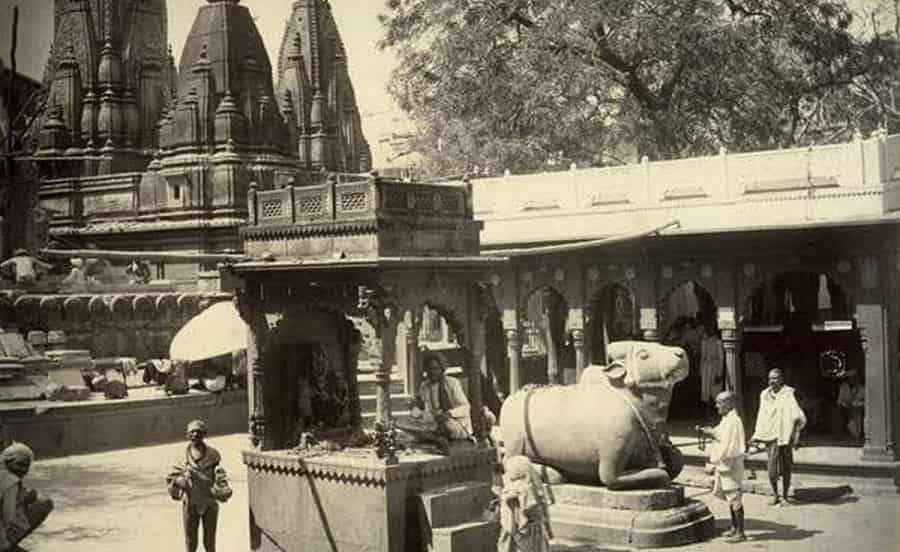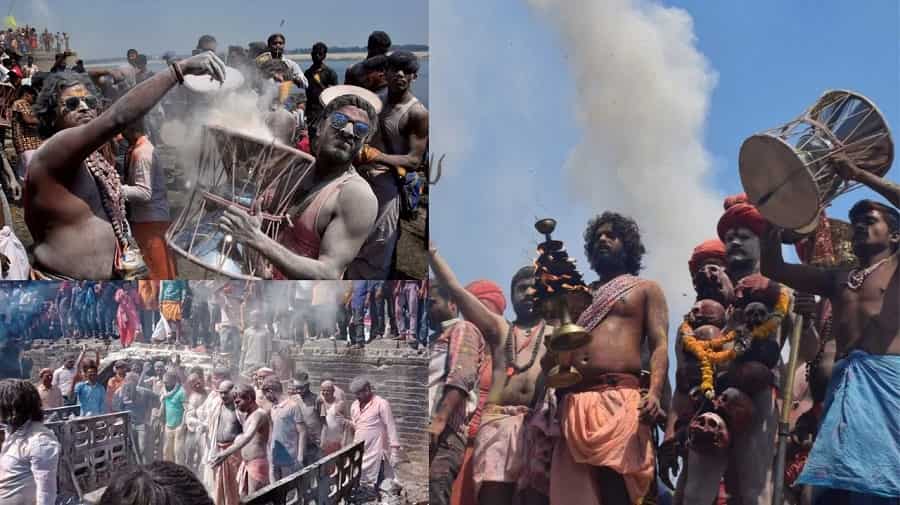Located on the western banks of the holiest river of India- River Ganga, Varanasi is the spiritual capital of India. In its heart lies one of the most popular temples of Lord Shiva- Kashi Vishwanath. Lakhs of devotees come to Kashi Vishwanath Temple to seek blessings of lord Shiva. It is also known as the Golden Temple. In this post, we will provide you a detailed history and legends associated with Kashi Vishwanath Temple.

The Origin of Kashi Vishwanath Temple
Decoding the exact date of the origin of Kashi Vishwanath Temple is impossible. However, the temple finds its mention in Skanda Purana. According to the Skanda Purana, Kashi Vishwanath Temple is mentioned in the Kashi Khand segment of Skanda Purana.
It is also believed that Lord Shiva himself established his Jyotirlinga here. According to the other tales, the temple was built by King Harishchandra.
There is also an interesting story behind the origin of Kashi Vishwanath Temple. It is said that Lord Shiva wanted to test Lord Brahma and Lord Vishnu’s supremacy when they tried to challenge each other. Lord Shiva changed himself into an endless pillar of light which today is known as Jyotirlinga. He told Brahma and Vishnu to find the end of the pillar and prove their supremacy.
Lord Vishnu after making an honest effort realized that the pillar is endless but Lord Brahma decided to lie to pretend to be more powerful than Lord Vishnu. He also influenced a flower named Kakuli to lie to Lord Shiva that he had witnessed and found the end of the pillar. Lord Shiva sensed the lie of Lord Brahma and in anger cursed Lord Brahma that he will not be worshipped anywhere. While on the other hand, Lord Vishnu will be worshipped everywhere.
After the test, Lord Shiva segregated the pillar of light in 12 different places which today are known as Jyotirlinga Temples. Kashi Vishwanath is one of the 12 Jyotirlinga Temples of Lord Shiva.
Suggested Tour:
Architectural History of Kashi Vishwanath Temple
The architecture of Kashi Vishwanath Temple is one of a kind. The main temple is in the form of a quadrangle. The Shivling of the temple is 60 km tall which is placed at a Silver Altar. The silver for the temple was donated by Nagpur’s Raghuji Bhonsle III in 1841.
The temple is built in Nagara style of architecture which has beautiful spires (Shikharas) converging at the top. The spires of the temple are golden which will take your breath away. The golden spires of the temple were donated by Punjab Kesari Maharaja Ranjit Singh in 1835.
Around the 1860s, The Rana of Nepal gifted a stone statue of Nandi Bull which is 7 ft in height.
The present structure of the temple was built in 1780 by Late Maharani Ahilya Bai Holkar of Indore.
Legends associated with Kashi Vishwanath Temple

Lord Shiva’s Appearance– Lord Shiva is Known as Vishweshwar or Vishwanath which means ‘Lord of the Universe’. He manifested himself in Kashi to protect and guide its people. Since then, it is said that whoever visits Kashi Lord Shiva protects them and the person gets Moksha from the karmic backlogs. Kashi Vishwanath Temple is a point of liberation from the cycle of birth and death.
Legend of Maa Annapurna- Located adjacent to Kashi Vishwanath Temple, the temple of Maa Annapurna Temple is the goddess of abundance, nourishment and sustenance. It is said that once an epidemic struck Kashi so badly that people started to die due to hunger. Lord Shiva realized that Kashi needs the blessings and nourishment of Maa Annapurna. So, Lord Shiva went to Maa Annapurna to request her to stay at Kashi. Maa Annapurna on Lord Shiva’s request fulfilled the request and said that no one will stay hungry at Kashi. So, people who visit Kashi Vishwanath will also get the blessings and nourishment of Maa Annapurna.
- Suggested Tour: Varanasi Temple Tour Package
Historical Evolution of Kashi Vishwanath Temple
The Kashi Vishwanath Temple you see today is not the same in ancient times. The temple has been rebuilt multiple times due to destruction caused by the invaders and political changes. See the different phases of evolution of Kashi Vishwanath Temple-
- Ancient Times– The Kashi Vishwanath Temple finds its mention in the Skanda Purana in the Kashi Khand Section.
- Sultanate Period– ( 12th to 16th Century) The original Temple of Kashi Vishwanath got damaged by Qutbuddin Aibak and Raja of Kannauj in 1194 C.E. In 1230 C.E, during Iltutmish rule, the temple got damaged again by the rulers like Sikandar Lodhi.
- Mughal Era (16th-17th Century)- During Akbar’s rule, Raja Man Singh built the temple. In Jahangir’s reign, Vir Singh Deo completed the construction of the temple. In 1669, Aurangzeb demolished Kashi Vishwanath Temple and built Gyan Vapi Mosque in its place.
- Recent Times- In today’s times various restoration efforts have been taken by the government. Under the Kashi Vishwanath Dham Corridor project, a Parikrama Mandap is built on 157 pairs of pillars. Now the ghats of Kashi and the temple are connected together. Kashi Vishwanath Corridor connects Lalita Ghat to Mandir Chowk on temple premises. The corridor is 75 m wide and spread over an area of 5 lakh sq ft.
Final Words
Kashi Vishwanath Dham stands as a symbol of the everlasting faith of the devotees. It stands still in pride even after numerous attacks. The sacred site of Kashi Vishwanath is a Moksha Dham. Devotees from all over the world come here for spiritual solace, wisdom and enlightenment.
Suggested to Read:

 Call
Call WhatsApp
WhatsApp Enquiry
Enquiry